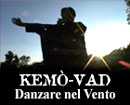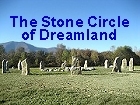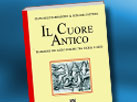| English Page |
The “Rama Vive” Project |
 |
 |
| 01 February 2011 | ||
The Celtic Traditions of Piedmont and the Myth of the City of Rama The modern era aims towards the future: every day, technological conquests grant us new instruments that allow us easy use of knowledge-based data, also giving us the impression that the world is at a fingers touch. Regardless of this, we are faced with great enigmas that even history hasn't been able to provide an answer to. Imposing dome structures erected thousands of years ago by unknown peoples, through techniques that are still today mostly without explanation, can be found all around the world. The megalithic complexes of Tibet or those of the Pacific Ocean do not reveal their secret. The imposing temple of Stonehenge, or the thousands of menhirs lined up in kilometer-long rows at Carnac in Brittan, have no satisfying answer in regards to their construction and, above all, use. The large stone circle in Wyoming, quite similar to their European counterparts, cannot be accounted for. Towering complexes formed by stones lifted by man thousands of years ago, some of which are over 5 m long, waiting in at several hundred tons, which in many cases mark the incidence of the seasons, equinoxes and solstices. A form of science practiced by unknown peoples, who have left behind eye-catching testimony. Of course, it is impossible not to consider the mysteries of "our home". Every Italian region is spread with prehistoric megalithic complexes. The many megaliths of the region of Puglia, the gargantuan walls of the Circeo in Lazio, the megaliths found in Sicily and Sardinia provided testimonial on a past that is difficult to both identify and catalog. These traces found all around the planet can lead to the idea that there was a civilization prior to our own, which today has vanished. History does not face this issue; however, there are peoples that still preserve the memories of past civilizations, whose traditions still have direct reference in the ancient stones. Only the natural peoples of the entire planet, the natives of every continent, seem to preserve the memory of this ancient past in their traditions. This ancient past is also still present within the territory of Piedmont. The numerous dolmen and menhir that dot the valleys of Piedmont reveal the presence of settlements that, in the distant past, occupied the lands from many centuries. This fascinating history puts us face-to-face with myths, legends and traditions preserved by the elders. The megalithic walls unearthed by the Ecospirituality Foundation in the Susa Valley, attributed to the mythic city of Rama, seem to offer proof of the presence regarding a vanished civilization; nevertheless, still present in the myths preserved by the elders. A civilization that can be linked to the Celtic culture. We are used to considering our roots and our history on the basis of the information that is provided to us by the culture in which we were born and raised. Usually, the ancient roots that support our culture, and from which it was born, are not considered. The areas of northern Italy are rich in traditions, legends and megaliths. Such heritage unites with the Celtic culture that is spread throughout Europe, in which our roots can be found. Celtic culture is normally identified with countries of northern Europe. Italy is not regarded as a Celtic territory; yet, Italy contains imposing megalithic ruins that seemingly have no explanation or place within history. Such heritage is underestimated. The Susa and Lanzo Valleys, as the rest of Piedmont, are filled with megalithic sites. Some of these are known, while many other of these sites remain knowledge only to sector-buffs; but mainstream institutions do not hold them as subjects of research. Still, many others have been destroyed, though traces can still be found, or such areas fall under negligence, thereby making it impossible to observe and study them. Yet, our lands are of no less importance to the other is considered as being Celtic, such as Brittany, Ireland or Scotland. They are a match to these other lands in awe; and, above all, have nothing to envy in regards to history and traditions. The great megaliths that exist within the territory of Piedmont are known by relatively few people. These can be found everywhere; equal in splendor to their Breton and Irish cousins. The most accredited historical sources seem to suggest that the history of the lands begins with the Roman Empire, and apparently, prior to this period nothing of significance had ever occurred - the world was traveled by uncultured barbarians, cavemen who lived at primitive status. Yet, these "primitive" peoples have left testimony that is so imposing as to not find any explanation concerning its construction. Not only, but they have also left us a rich heritage of myths, legends and jewelry crafts that highlight the grandeur of these cultures.
According to this legend, the Valley of Susa contains an enormous megalithic city during the prehistoric times, whose culture supposedly left deep-rooted traces not only in Piedmont, but throughout Europe. In our present day, this myth might bring to mockery; however, researchers from the 1800s make clear reference to this Celtic city, as do the recovered documents of the Roman era. At the moment, research by cross-Alpine archaeologists is trying to assess the possibility regarding the remains of this cyclopean city. The city of Rama is still mentioned in legends belonging to the Susa and Lanzo Valleys. Nonetheless, this myth is never seriously taken into consideration. Why? The legend has ties to a historical mystery, which regards the myth of Phaeton and the megalithic city of Rama. Memory of this gargantuan city remains within local traditions, the testimonials of researchers from the 1800s, and from the memoirs of the ancient Roman historians. The megalithic discoveries are the tinder keeping the burning presence alive. The legend (form the Metamorphoses of Ovid) states that Phaeton supposedly fell on the crossing point of two rivers, in the area that today houses modern day Torino. According to the myth ,the god Phaeton descended from the skies to bring a vast wealth of knowledge to man, such as agriculture, astronomy, smoldering, and alchemy. Just as Vulcan and the Chinese god Houang-Ti, Phaeton was aided by two assistants made of golden metal. He created a kindred of spiritual kings, the Ard-ri, who spread his teachings all across Europe. This influence led to the birth of the great civilization of the Black Sea, which gave rise to, following the deluge of the Mediterranean Sea as mentioned by the myth of Ys, all the Celtic ethnicities. Before leaving man, the god Phaeton built a large pierced wheel of gold in which he deposited all of his knowledge. At the base of Mount Roc Maol, where the god had dwelled, a temple was founded, which later gave way to city that would develop into what became known as Rama. A city of staggering proportions, which spread from current-day Susa and beyond, all the way to modern Torino. Perhaps the influence of this ancient tradition had given Torino its distinctive identity, given that it is stilled defined as a magical city of high spiritual proportions, a city of culture. Rama seemed to have been mere fruit of imagination; however, an incredible event that occurred in August 2007 tore Rama from myth to bounce it back into reality – sections of its walls were discovered. Towering walls similar to those of the Peslagic area of the Circeo. Legend turns into reality. But, then, what meaning could the myth of Phaeton have? Could there be any truth to this myth, as well? Perhaps it is best to recall the words of Plato in regards to the myth of Phaeton (Dialogues, Timaeus, III): the myths veil historical truths and re the methods of keeping memory of past events, which barbaric humanity is not able to pass down. Who could have passed down the memory of the Phaeton event? Humanity did not seem to exist at the time of this occurrence. A mystery within the mystery of humanity, which in all likelihood is not brought to our knowledge. The vast heritage of myths and legends of the Piedmont valleys, the many megalithic discoveries, and, above all, the shocking localization of the “Walls of Rama” have stimulated the Project “Rama Vive”. This project aims at the reclamation of the origins and traditions of the Piedmont valleys. Research in merit can account for megalithic ruins and oral traditions – mapping of archeological sites that provides visibility on the extension of the interesting historical areas, and a compendium of the oral traditions a customs/uses that are still passed down today. Nonetheless, it is difficult to navigate among memories, oral traditions, uses and customs without steering into wrong interpretations and subjective spin-offs. Thus, we feel it necessary to distinguish four elements: 1) folklore – often represents the distortion and disinformation of Celtic culture, an example is found in the interpretation of the figure of the masca (witch), the “devil’s bridge” of Lanzo, the chiseled cups in stones, etc. Folklore is often is intertwined with Christian interpretations of ancient Druidic teachings; 2) the traditions of the so-called “ancient religion” – the vast treasure of knowledge, customs, remedies, rites, transmitted firsthand by the ovates of the Druidic order or generational teachings: 3) historical events - relics, historical documents, reference to megalithic sites, etc; 4) the myths of origin - the spiritual baggage at the birth of the universe and man. It is important that one’s discoveries are shared. We shall make all the discoveries on our path known in real time; and will collaborate with all those who wish to help us gather a heritage that risks being lost forever. Without knowledge of one’s roots, the future cannot be faced. . |
 -->
-->
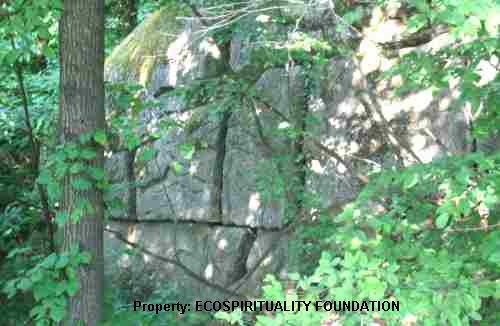
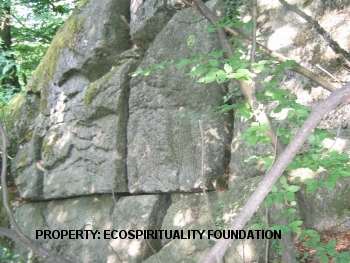 The heritage of myths and legends of our valleys contains a particularly significant legend - that of the city of Rama. This legend was known up until the 1800s, but it disappeared into nothingness and today there seems to be no apparent trace.
The heritage of myths and legends of our valleys contains a particularly significant legend - that of the city of Rama. This legend was known up until the 1800s, but it disappeared into nothingness and today there seems to be no apparent trace.

